1) The first thing we need to know about the Honda RC213V-S is the origin and proper pronunciation of its model name. RC is the prefix historically used to designate works machines built by Honda Racing Corporation (HRC). This dates back to the 1958 RC71 road racer. 213V is pronounced 21, 3V (as in 21st century, 3rd version). The S designates Street.
2) A maximum production run of 250 units is planned for world distribution if there’s enough demand for the $184,000 hand-built machines. How many are sold in the States remains to be seen because of concerns related to the power output of the 999cc V-4 in the US-legal version. The European-spec bike has a claimed output of 157 peak horsepower at 11,000 rpm, while the U.S. machine will make 101 hp at 8,000 rpm. If it’s any consolation to potential American buyers, the Japanese domestic version is limited to 68 hp at 6,000 rpm. For the record, I rode a Euro-spec RC213V-S along with another equipped with the accessory Sport Kit. Among the performance kit bits is an ECU and exhaust system combination that unleashes a claimed 212-plus hp at 13,000 rpm. Sad news: The $12,000 kit will not be available to owners of bikes sold in the US. It will certainly be interesting to see how American owners circumvent the situation.
3) Having now ridden the RC213V-S on the Circuito Ricardo Tormo in Valencia, Spain, I must admit to harboring serious envy for the affluent few who will soon have one of these very special jewels parked in their garage. Never have I ridden a production sport bike exuding such a high level of chassis precision and control. Every aspect of the rider/bike interface is the epitome of refined performance.
4) The Sport Kit version offers a genuine taste of riding a modern MotoGP machine. But then again, the only MotoGP bike I've personally experienced was the RC211V that Valentino Rossi rode to the 2002 MotoGP world title, and that brief ride took place at the Suzuka Circuit in Japan. Rusty recollection or not, I'm a believer.
5) The Honda RC213V-S’s electronics suite includes a 3-level power-delivery profile, 9-level traction/wheelie control, and 4-level engine brake control. The parameters can be custom-configured while the bike is stationary and stored in each of five modes (presets) that may be selected on the fly. These ride aids felt seamless, smoothly intervening at the various sensitivity levels and unobtrusive at the lowest settings. Could this be a glimpse of what we’ll see on a CBR1000RR in the near future?
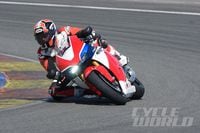
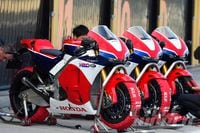

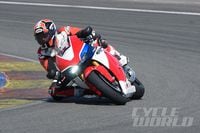
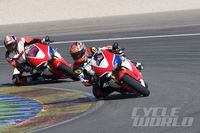
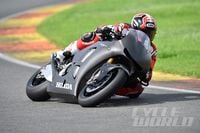
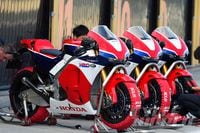
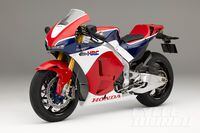
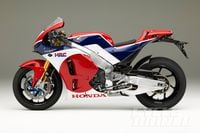
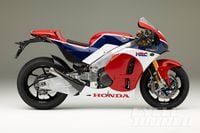
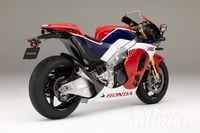
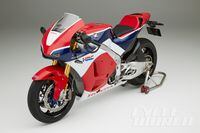
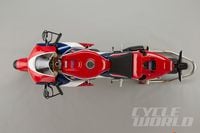
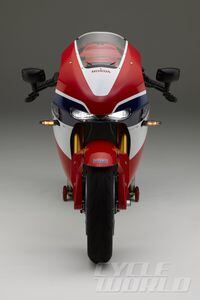
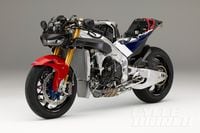
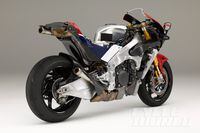
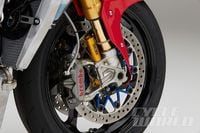
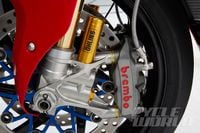
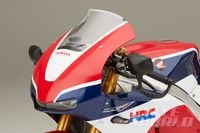
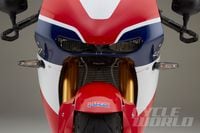
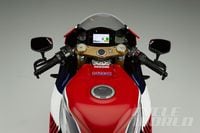
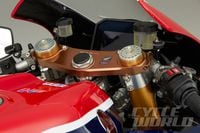
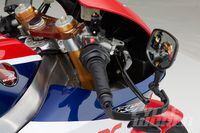
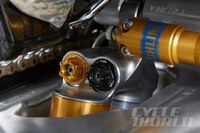
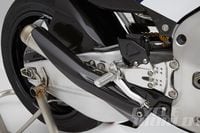
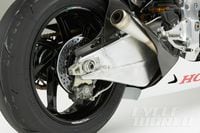
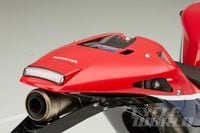
/cloudfront-us-east-1.images.arcpublishing.com/octane/VFYUM4X4KRGDHEGYLM22BKQICA.jpg)
/cloudfront-us-east-1.images.arcpublishing.com/octane/6ZST3K4CRZAPJHEHGFUPW5QTZ4.jpg)
/cloudfront-us-east-1.images.arcpublishing.com/octane/FX7P3VV7OBD25NQZENLC7Z2C2Y.jpg)
/cloudfront-us-east-1.images.arcpublishing.com/octane/RGWDY7OB65BUNEEC5QIKVWDS6E.jpg)
/cloudfront-us-east-1.images.arcpublishing.com/octane/YIQBPU45RJCRHGFHFCWVBZVXKQ.jpg)
/cloudfront-us-east-1.images.arcpublishing.com/octane/JQYYZOU2VBDNPO2QQS672REQHE.jpg)
/cloudfront-us-east-1.images.arcpublishing.com/octane/XKJT4SI6HZAOTO4SBDVU66L2MQ.jpg)
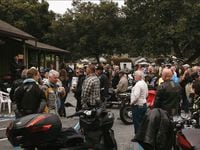
/cloudfront-us-east-1.images.arcpublishing.com/octane/4UVTXD2DPVDEXCSLBMDAPEFWNQ.jpg)
/cloudfront-us-east-1.images.arcpublishing.com/octane/NREVLYTAKNB3NIIQRJGCGYBXHU.jpg)
/cloudfront-us-east-1.images.arcpublishing.com/octane/GVKW4WSC4NA6XEL3JPDGSTRRSA.jpg)
/cloudfront-us-east-1.images.arcpublishing.com/octane/ZCHPADKJI5EZPCFRD6HUMI6RAA.jpg)
/cloudfront-us-east-1.images.arcpublishing.com/octane/OTYNIYDLG5BMRIVZW2TFBAW5R4.jpg)
/cloudfront-us-east-1.images.arcpublishing.com/octane/NENHT3MW2JFV5M3JPHXOHVTLXQ.jpg)
/cloudfront-us-east-1.images.arcpublishing.com/octane/KO7HERZNSRG2FOIAQCLCNXYQYA.jpg)
/cloudfront-us-east-1.images.arcpublishing.com/octane/GASJTXMDUBCGDDJAUVS22I7BEA.jpg)
/cloudfront-us-east-1.images.arcpublishing.com/octane/BDU4JR5GBVE4JOG6TMYAKKM5WQ.jpg)
/cloudfront-us-east-1.images.arcpublishing.com/octane/HLIXJRNJ7FFXJDBH5QLH2BF3PI.jpg)
/cloudfront-us-east-1.images.arcpublishing.com/octane/2PTECARZVRFGLLBHS7T2XCID6E.jpg)
/cloudfront-us-east-1.images.arcpublishing.com/octane/ICN3LDEN4ZDILFAELNU6QMKVZU.jpg)
/cloudfront-us-east-1.images.arcpublishing.com/octane/3NUZ23QA3RD4POFPRQABCGPNJM.jpg)
/cloudfront-us-east-1.images.arcpublishing.com/octane/GIPX3W7WDJCZZMTFRUWHSRLI7Y.jpg)
/cloudfront-us-east-1.images.arcpublishing.com/octane/6NQ3I7Y3FBFBNOCCIIJ4EUXVQ4.jpg)
/cloudfront-us-east-1.images.arcpublishing.com/octane/X4L6LRIH2ZCJJFRI4K72WYJIJY.jpg)